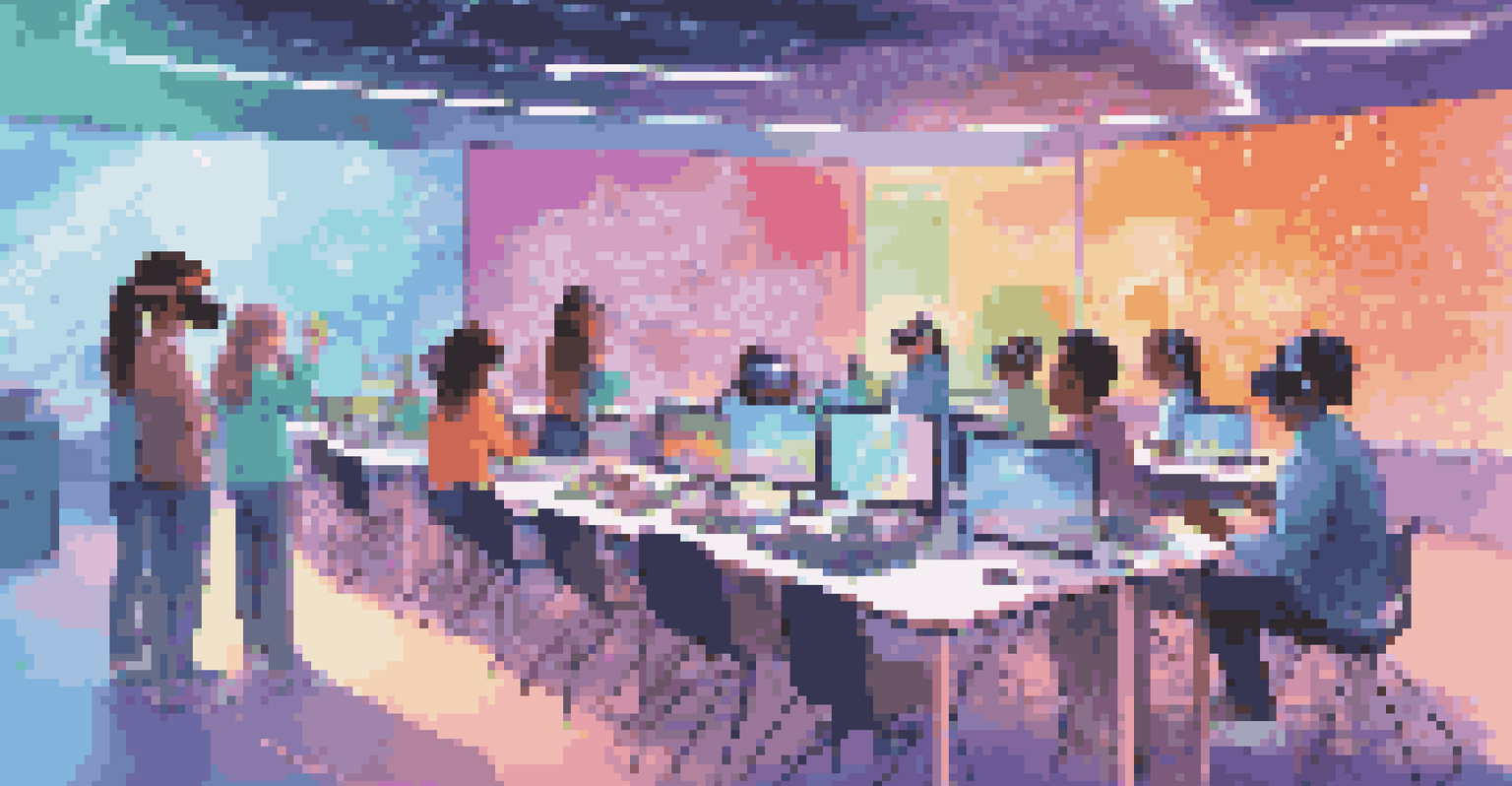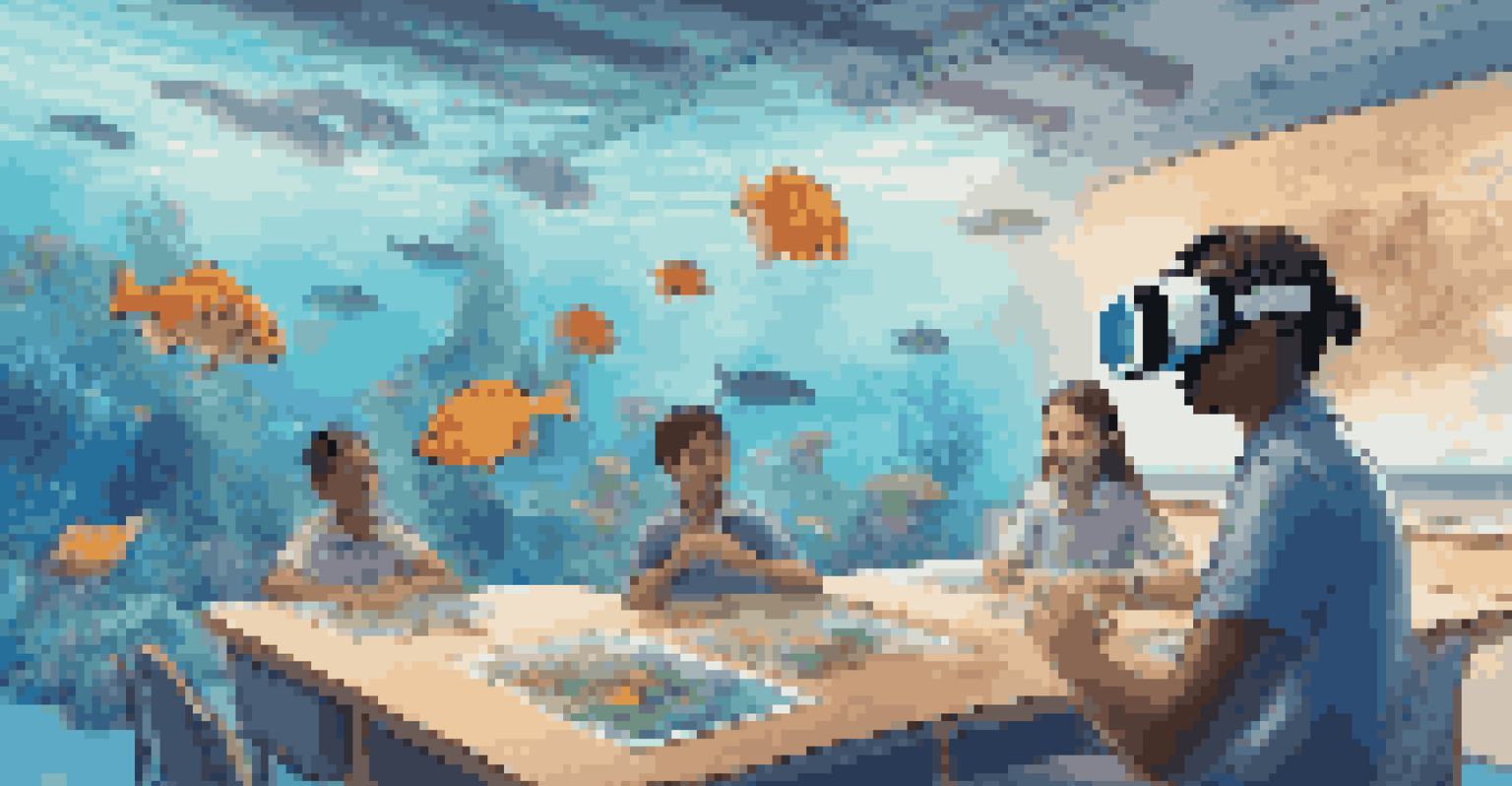The Future of Virtual Reality in K-12 Education Systems

Understanding Virtual Reality and Its Role in Education
Virtual reality (VR) immerses users in a computer-generated environment, making them feel as if they are present in that space. In the context of K-12 education, VR offers an innovative way to engage students by creating interactive and immersive learning experiences. Imagine a history lesson where students can virtually visit ancient Rome or an anatomy class where they explore the human body in 3D.
Virtual reality is not just a technology; it's a new way of experiencing the world and learning from it.
As technology evolves, more schools are considering how VR can enhance traditional teaching methods. It's not just about playing games; VR can facilitate deeper understanding of complex subjects by allowing students to experience them first-hand. By bringing lessons to life, VR can cater to various learning styles, making education more inclusive.
However, implementing VR in classrooms goes beyond just having the equipment. Teachers will need training to effectively integrate VR into their curricula. As we look ahead, it's essential to consider both the potential benefits and the challenges that come with this exciting technology.
Enhancing Engagement Through Immersive Learning
One of the most significant advantages of VR in education is its ability to capture students' attention. Traditional teaching methods can sometimes lead to disengagement, but VR creates a unique environment where learning becomes an adventure. For example, students can embark on virtual field trips to the depths of the ocean or the surface of Mars, sparking curiosity and a desire to learn more.

Engagement isn't just about fun; it's backed by educational research showing that immersive experiences can improve retention and understanding. When students interact with the material in a dynamic way, they are more likely to remember what they've learned. This hands-on approach can transform subjects that may seem dull into exciting explorations.
VR Enhances Engagement in Learning
Virtual reality captivates students by transforming lessons into immersive adventures that improve retention and understanding.
Moreover, VR can foster collaboration among students. They can work together in virtual spaces, solving problems and completing projects as a team. This not only enhances their learning experience but also builds essential social skills that are crucial in today's interconnected world.
Personalized Learning Experiences for Diverse Needs
Every student learns differently, and VR has the potential to offer personalized learning experiences that cater to individual needs. For instance, students who may struggle with traditional teaching methods can benefit from VR’s interactive nature, allowing them to progress at their own pace. This adaptability can help bridge gaps in understanding and keep students motivated.
Education is the most powerful weapon which you can use to change the world.
In addition, VR can provide a safe space for students to practice skills without the fear of making mistakes in front of peers. Whether it’s a science experiment or a public speaking exercise, VR allows students to learn from their errors in a risk-free environment. This encourages a growth mindset, where students view challenges as opportunities for improvement.
As schools adopt VR technology, they can tailor educational content to meet the specific learning objectives of their students. This customization can lead to more effective teaching strategies and ultimately better educational outcomes, making learning more accessible for everyone.
Overcoming Challenges in VR Implementation
While the benefits of VR in education are promising, there are several challenges to overcome for successful implementation. One major hurdle is the cost of VR equipment and software, which can be prohibitive for many schools, especially those with limited budgets. To make VR a reality in K-12 classrooms, schools will need support from districts, grants, and possibly partnerships with tech companies.
Alongside financial considerations, schools must also address the infrastructure needed to support VR technology. Fast internet connections and sufficient tech support are essential to ensure that VR experiences run smoothly. Without the right infrastructure, the immersive potential of VR can be significantly hampered.
Personalized Learning with VR
VR technology allows for tailored educational experiences that cater to individual learning styles and needs.
Lastly, training teachers to effectively use VR tools poses another challenge. Professional development programs must be established to equip educators with the skills they need to integrate VR into their teaching. By addressing these challenges head-on, schools can pave the way for a more inclusive and engaging learning environment.
The Role of Teachers in a VR-Enhanced Classroom
In a virtual reality-enhanced classroom, the role of the teacher evolves from being the primary source of knowledge to a facilitator of experiences. Teachers guide students through immersive journeys, helping them make connections between the virtual world and real-life applications. This shift fosters a more collaborative and interactive learning environment.
Teachers can curate VR content that aligns with their lesson plans, ensuring that students are not just passively experiencing VR but actively engaging with the material. For instance, during a literature class, a teacher might take students on a virtual tour of the settings in a novel they are studying, allowing them to visualize the story in a whole new way.
By embracing VR technology, teachers can inspire creativity and critical thinking among their students. They become mentors who encourage exploration and inquiry, empowering students to ask questions and seek answers in a way that traditional methods may not allow.
Future Trends: What Lies Ahead for VR in Education?
As we look to the future, the potential for VR in K-12 education is vast. Emerging technologies, like augmented reality (AR) and mixed reality (MR), are poised to complement VR, creating an even more dynamic learning experience. For instance, AR can overlay digital information onto the real world, offering students a multi-dimensional view of their surroundings while learning.
Moreover, advancements in VR technology will likely lead to more affordable and accessible options for schools. As companies innovate and competition increases, the cost of VR equipment may decrease, making it feasible for more educational institutions to adopt it. Schools should keep an eye on these developments to stay ahead in the digital age.
Challenges in VR Implementation
Successful integration of VR in schools requires addressing financial, infrastructural, and training challenges for educators.
Ultimately, the future of VR in education is about creating a more engaging, personalized, and inclusive learning environment for all students. By harnessing the power of technology, educators can prepare students for a rapidly changing world, equipping them with the skills they need to thrive in the future.
Conclusion: Embracing the Virtual Reality Revolution
In conclusion, virtual reality holds great promise for transforming K-12 education systems. From enhancing engagement to providing personalized learning experiences, the benefits are clear. As educational institutions begin to embrace this technology, they must also navigate the challenges that come with it, ensuring that all students have access to these innovative tools.
The integration of VR into classrooms is not just a trend; it represents a significant shift in how we approach education. By fostering collaboration, creativity, and critical thinking, VR prepares students for the complexities of the modern world. It’s an exciting time for education, with endless possibilities on the horizon.

As we move forward, the key will be to prioritize effective implementation and ongoing support for educators. With a thoughtful approach, the future of virtual reality in K-12 education can lead to enriched learning experiences that inspire the next generation of thinkers and innovators.